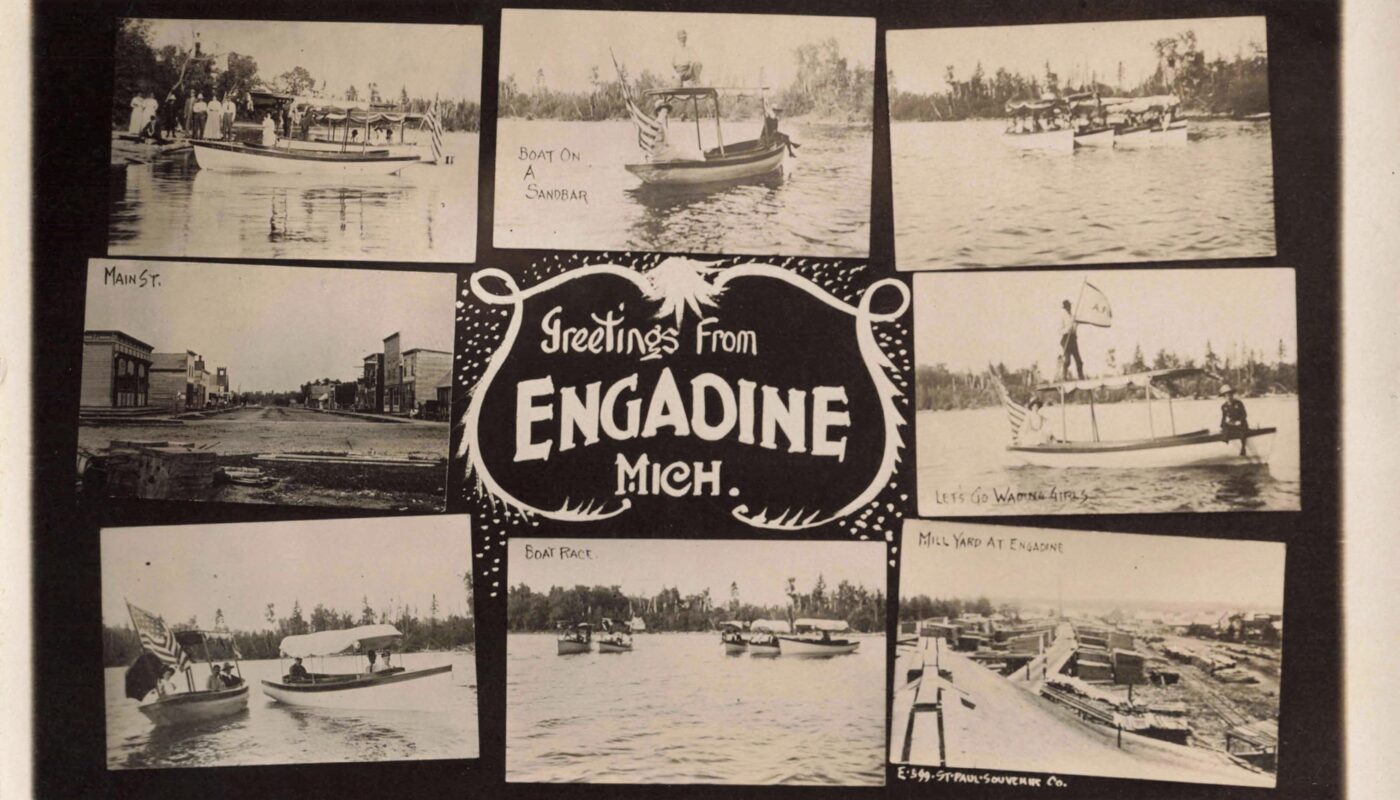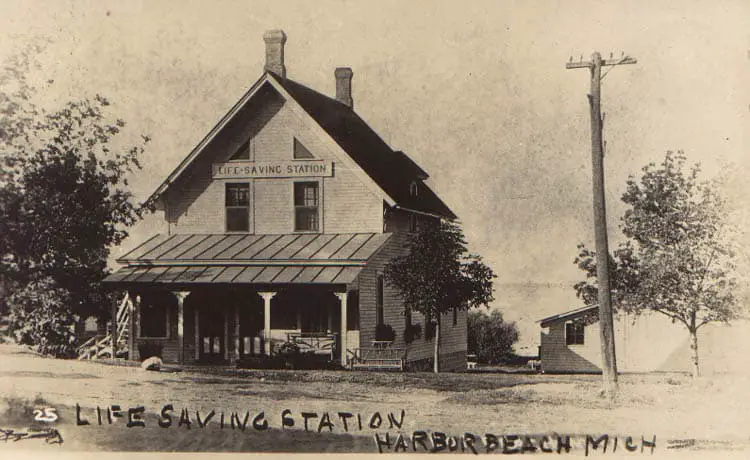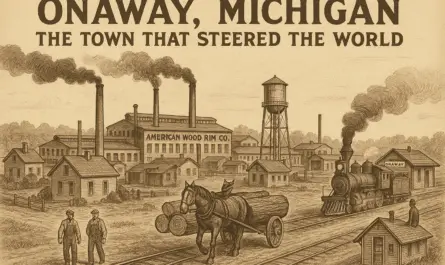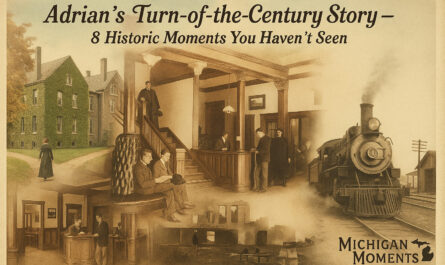The history of Engadine Michigan begins with logging and railroads. In 1889, what was then the small settlement of Kennedy got its first post office and a siding on the new Canadian Pacific railroad. Starting that year, “millions of feet of logs” were shipped out of Kennedy by rail. The influx of railroad tracks and sawmills turned the woods into a booming lumber center.
Video – Engadine, Michigan: Echoes of a Lumber Town’s Past
Engadine, Michigan – a small Upper Peninsula town that was once a bustling hub of logging and railroads. In this Michigan Moments episode, we share century-old photos of Engadine’s school, sawmill, trading post, and train depot, and tell the straightforward story of how these elements shaped the town from 1900–1950. You’ll meet the families and workers who lined up by the one-room schoolhouse, ride on the steam trains that delivered logs, and even visit the Bence Indian Trading Post where Ojibwa artisans traded their crafts. Find out how Engadine transitioned from a logging village to a quiet highway town, and how local history is preserved today. Don’t miss these surprising moments from Engadine, Michigan’s past!
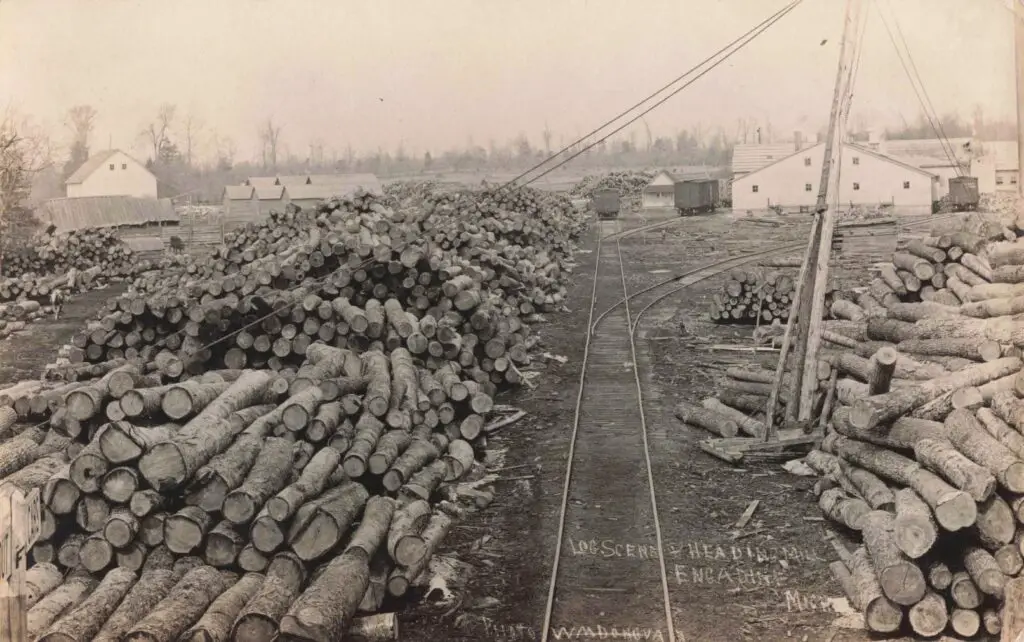
By 1893, a Swiss-born station master (Sam Peterson) renamed the town Engadine after the Engadine valley in Switzerland. This change signaled the community’s roots in a new era. From these beginnings in the 1880s–1890s, the history of Engadine Michigan unfolded as a story of loggers, rail workers, and settlers making a life in the Upper Peninsula.
Early Industry and Railroads
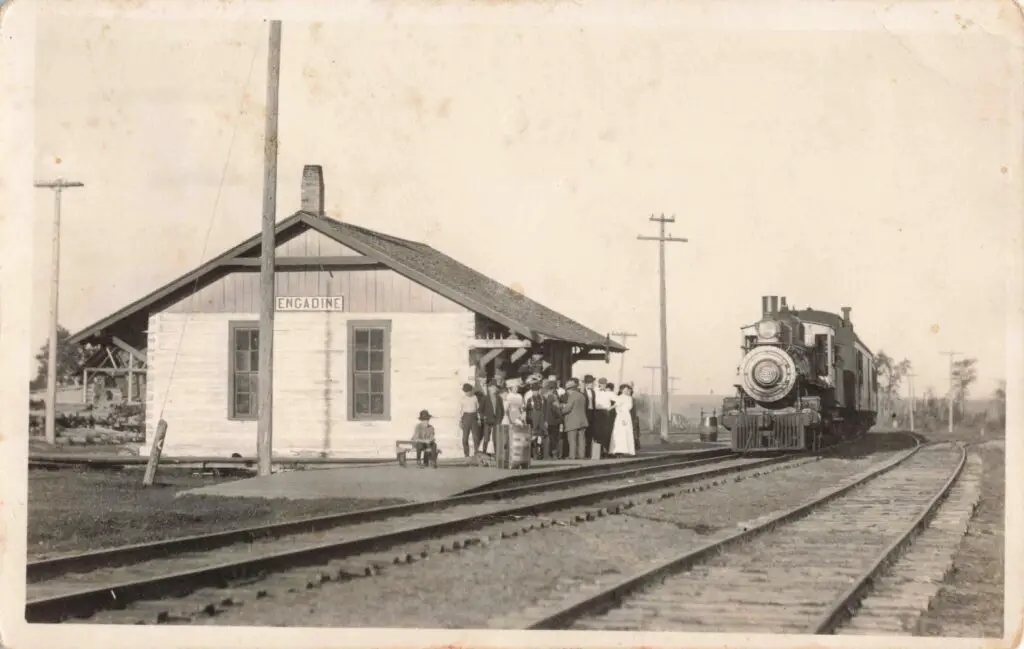
As Engadine grew, railroads and mills dominated its economy. The Canadian Pacific Railroad (later the Soo Line) ran through the village from the start, making Engadine a key shipping point. By the 1890s, local entrepreneurs had built sawmills. The Engadine Lumber Company set up operations here, and in 1909 it reorganized as the Freeman Lumber Company. That company’s mills, with long timber sheds and a tall smokestack, cut nearby pine into boards. Logs arrived from all around the forests, often floated down streams or hauled by oxen to the mill. The sawmill fueled Michigan’s lumber boom for a time.
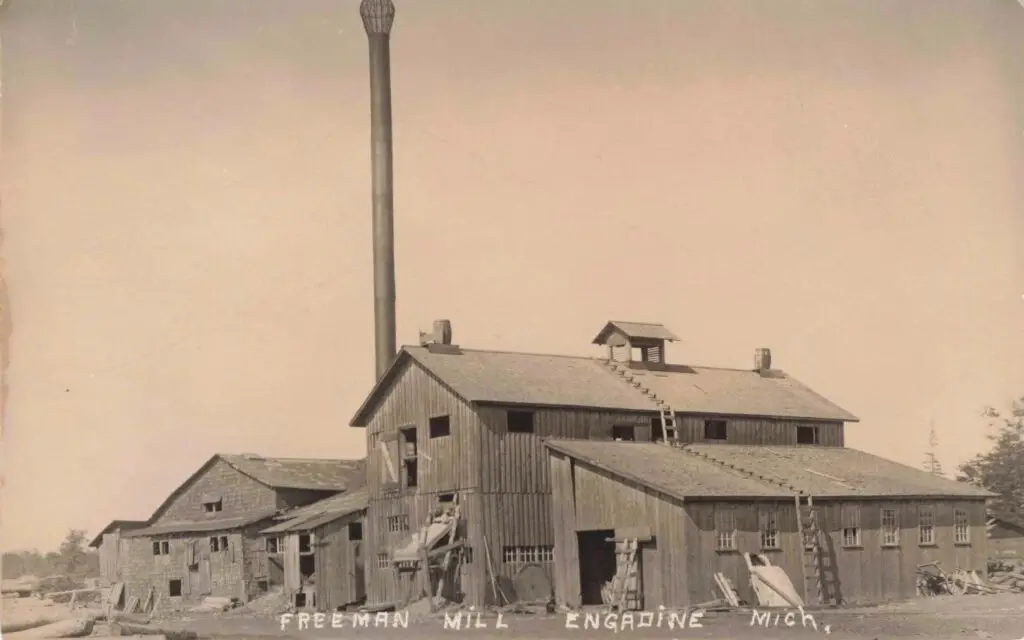
One of Engadine’s early sawmills: the Freeman Lumber Company’s mill around 1910.
Meanwhile, logs and goods rolled in and out by train. Each day a steam locomotive would arrive, loaded with farming equipment and coal, and leave carrying railcars full of sawn lumber. This pulse of trains made life possible. The town’s original name, Kennedy, reflected its beginnings as a railroad siding. When cars and trucks later took over (via new highways in the 1940s), Engadine’s depot fell silent – but in the early decades the train defined the town.
Daily Life and Education
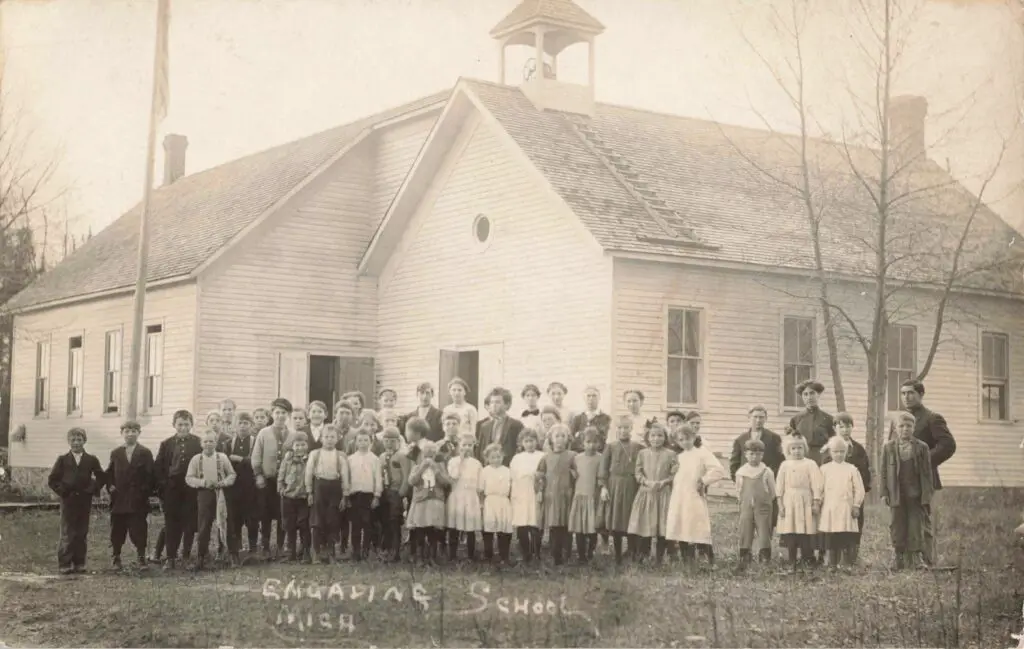
Daily life in Engadine revolved around its tiny downtown and schoolhouse. A one-room wooden school stood at the edge of town. All the local children – boys in vests and girls in dresses – attended this single classroom. In photos, students line up by the school door every morning. Parents chatted in the yard while teachers rang the bell. Behind them, Engadine’s Main Street was simple: a general store, a small hotel, a blacksmith, and other shops. Men in wide-brim hats leaned on a boardwalk outside the store, discussing the day’s work.
Everyone in this lumber town knew each other, and school events were community gatherings. In fact, the Engadine Historical Museum later restored a replica of this very one-room school – evidence of how central education was to the village. These everyday scenes of children and shopkeepers are key pieces of the history of Engadine Michigan.
Industry: Sawmill and Cooperage
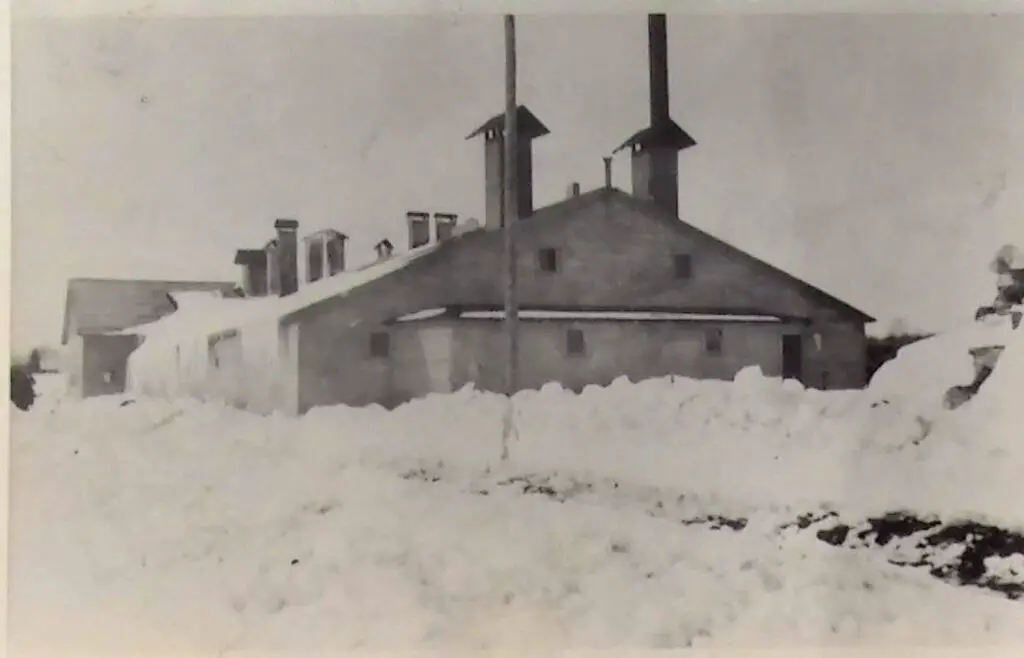
Engadine’s economy depended on its mills and workshops. Outside town, the Freeman Lumber mill processed thousands of logs each year. The photograph above shows the mill’s large wooden structures and brick smokestack, visible for miles. Ox teams and later trucks brought hemlock and pine down logging roads to feed the mill. Nearby, a large cooperage factory turned cut wood into barrels, staves and shingles. In fact, the Cooperage Mill became the largest employer in early Engadine. Men (often recent immigrants) cut and shaved staves, assembling them into wooden barrels used to ship goods. Tens of thousands of barrels left Engadine’s cooperage in the early 1900s. This combination of sawmills and cooperage defined Engadine’s industrial chapter.
Native Americans and the Trading Post
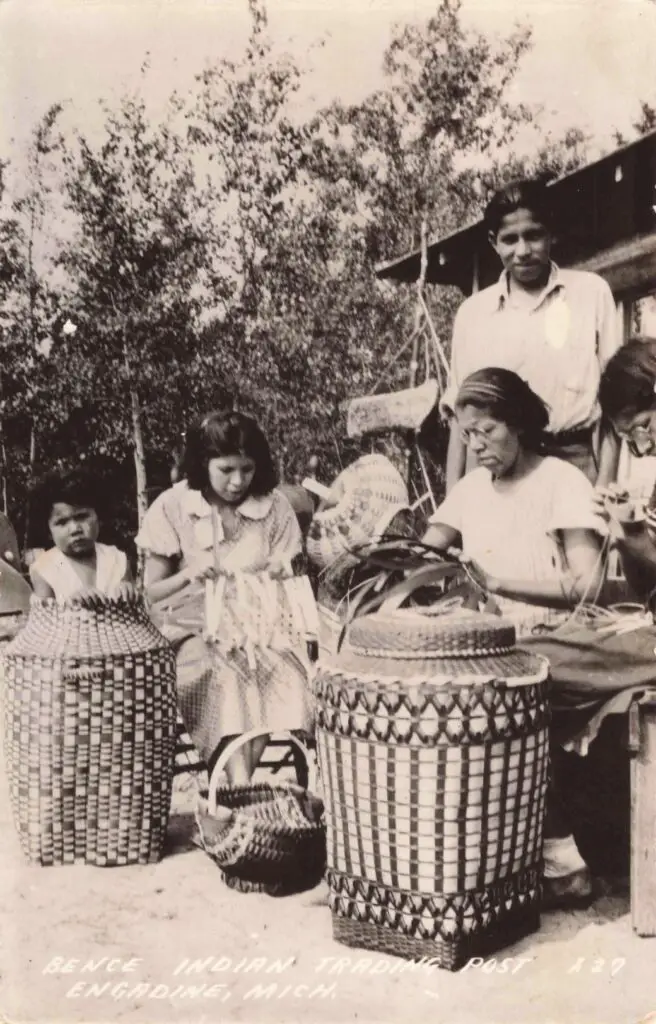
Engadine was also part of a long Native American heritage. Not far from the mill stood the Bence Indian Trading Post, where local Ojibwa and Odawa families met traders. In the photo above, Native women weave birch-bark baskets for sale. Handicrafts like baskets, moccasins, beadwork and blankets were sold there. Tall totem poles with white and green paint stood by the trading post entrance. For residents, the trading post meant an exchange of goods and friendship between the lumber townspeople, tourists and the Anishinaabe (Ojibwa/Odawa) neighbors. This mixing of cultures – woodcutters and Native craftsmen – is a surprising part of Engadine’s story. The trading post embodies how Engadine’s history is connected to Native life in Michigan’s Upper Peninsula.
Hiawatha Sportsman’s Club and Recreation
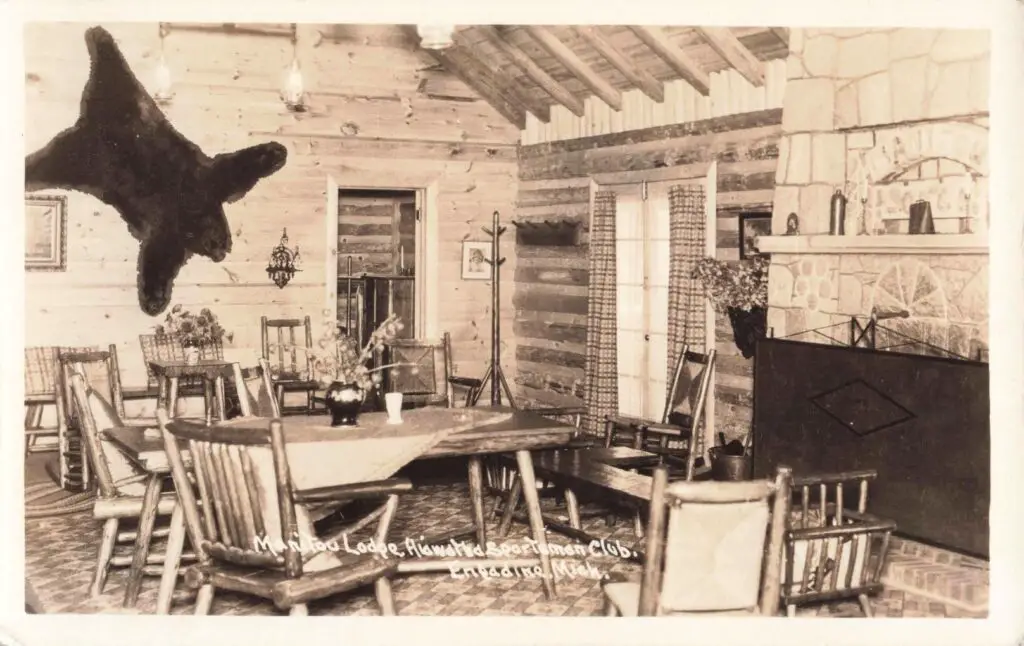
By the 1920s Engadine’s forests were thinning, and the town looked for new opportunities. In 1927, Dr. William McNamara founded the Hiawatha Sportsman’s Club on land north of town. He set aside tens of thousands of acres for fishing, hunting and preserving wildlife habitat. The club bought an old Engadine store in 1931 to use as its commissary (supply shop).
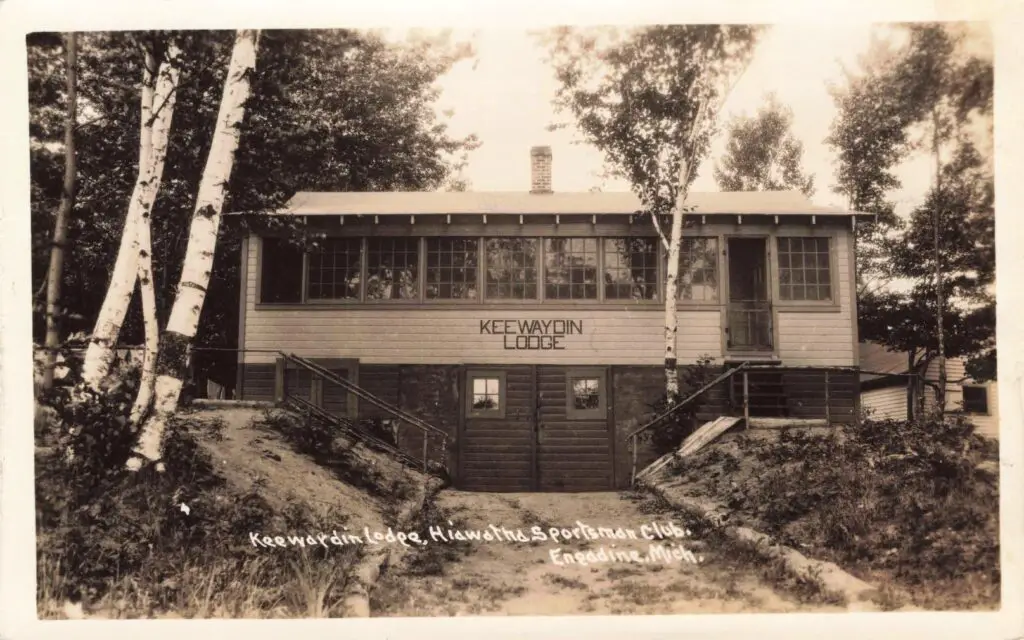
They also built a large lakeside lodge called Keewaydin, with rough-hewn logs and a stone fireplace, for anglers and hunters to stay overnight. This marked a shift from industry to recreation in Engadine’s story: where once only loggers roamed the woods, now bird-watchers and fishermen arrived by car. (The lodge building still stands today as a reminder of this era.)
From Rails to Highways
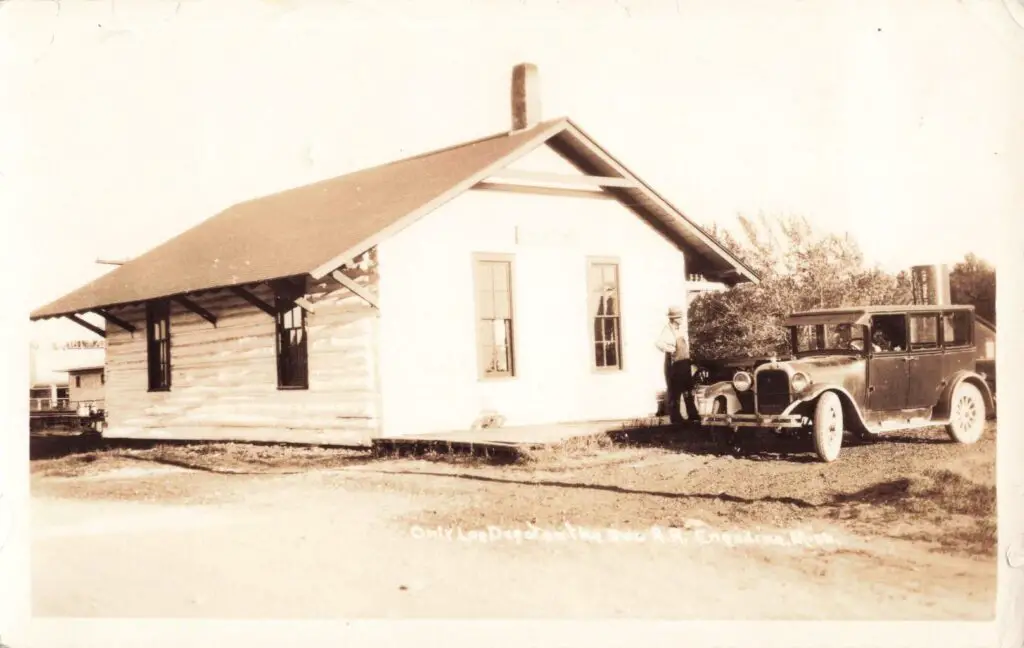
After World War II, modern roads changed Engadine’s role. In the 1940s, highway U.S. 2 was built south of town, and State Route M-117 was created to connect Engadine northward. Trucks and buses began to use these roads instead of the old logging rail lines. The Engadine train station, once so vital, no longer served passengers. With the highway taking traffic through the forests, Engadine’s main street grew quieter. Still, the town’s post office and church continued. Fields and young trees began to reclaim old logging camps and empty storefronts. This turn from rail-and-sawmill life to a calm highway crossroads is another chapter in the history of Engadine Michigan.
Preserving Engadine’s Past
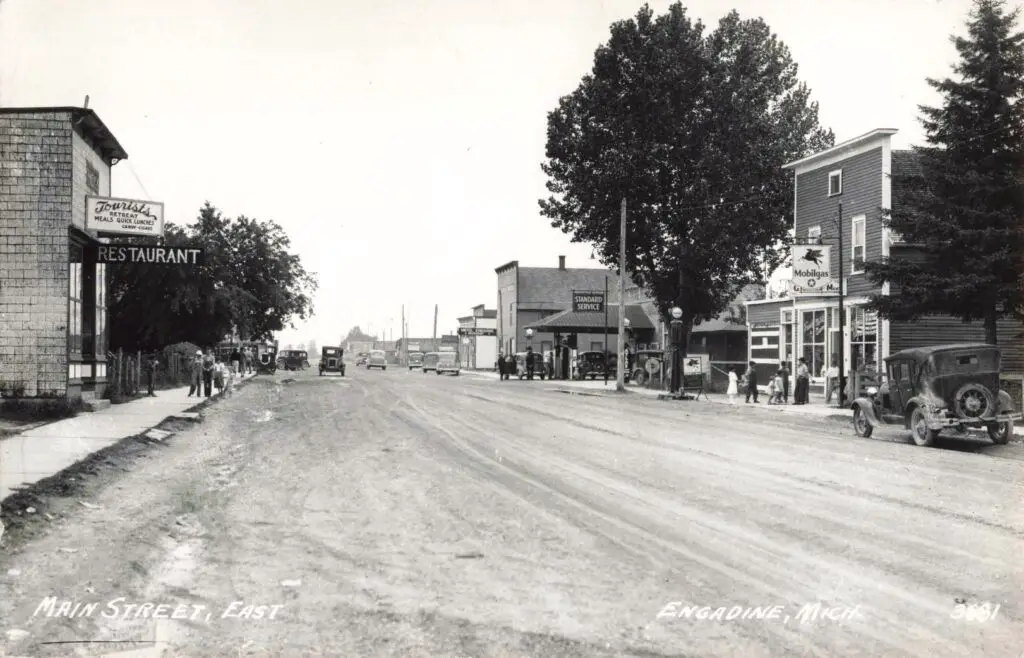
Today, locals honor these stories through a small museum and community history efforts. The Engadine Historical Museum houses many artifacts from the logging era. In its replica one-room school you can see the very bell that rang each morning.
Tools from the Freeman sawmill and the cooperage mill are on display, along with old photos and maps. The exhibits let visitors step back to 1894 and see life as it was. Residents share family photographs (like those above) to keep memories alive. All these efforts help keep the history of Engadine Michigan from fading. By looking at these images and hearing the stories, we connect with the real people who built this small Michigan village. Engadine’s legacy – humble schoolchildren, busy loggers, and fishing lodges – endures as a quiet but important piece of the state’s history
